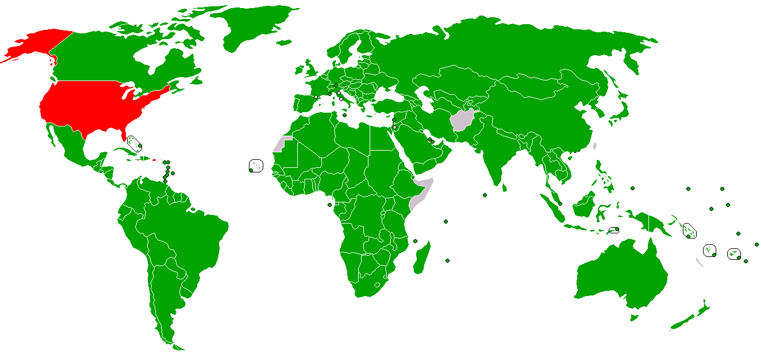The Kyoto Protocol

Countries in green have signed the Kyoto Protocol. Countries in grey have not yet decided, and red countries have no current intentions of signing the treaty. |
Governments can also play a role in combating global warming. They can place taxes on greenhouse gas emissions and provide tax breaks on the use of renewable energy. They can also decrease subsidies paid to support fossil fuel use. In December 1997, more than 2,200 delegates from 161 countries met in Kyoto, Japan to negotiate a treaty on global warming action. This has become known as the Kyoto Protocol. The first phase went into effect in January 2005. It called upon nations to reduce emissions of greenhouse gases by 2012 to at least 5.2% below their 1990 levels. The U.S. did not participate in this stage, and developing countries, like China and India, were excluded from having to reduce greenhouse emissions in the first phase because it was believed that this would slow their economic development.
Up until 2008, the U.S. was the world’s biggest emitter of greenhouse gases. In 2008, China replaced the U.S. in this role. Many governments call for a new treaty on global warming that will include developing nations like China, which are currently exempt from requirements to reduce their greenhouse gases.
In the early days of the agreement, U.S. President George W. Bush said that participating in it would hurt the U.S. economy, and so the U.S. did not take federal steps to reducing carbon emissions. As of April 2009, U.S. President Barak Obama had not signed the Kyoto Protocol either. He said it did not make sense to sign the agreement when there were only a few years of it left anyway. However, several U.S. states have passed laws to limit and reduce carbon dioxide emissions in an attempt to curb global warming. Many major cities throughout the U.S. have also taken measures to reduce energy use and carbon emissions through "green" initiatives that encourage citizens to use less energy and reward businesses for finding methods of reducing their carbon input to the atmosphere.